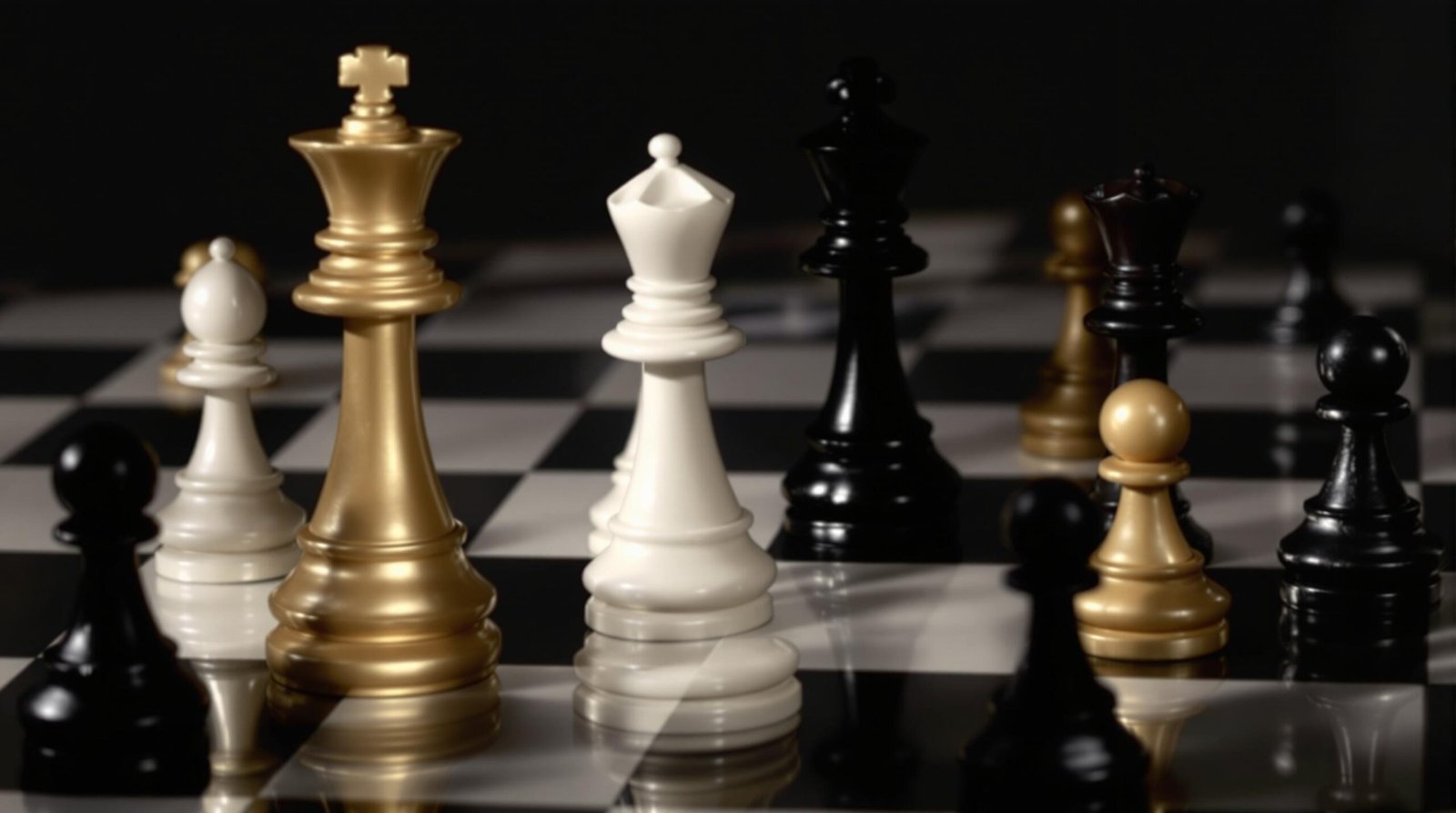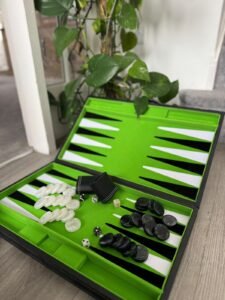
What are Chess Pieces Made From?

Chess, a game of strategy and intellect played for centuries across the globe, is often as much admired for its artistic playing pieces as it is for the mental challenge it presents. The craftsmanship behind chess pieces ranges from simple, functional designs to elaborate works of art that command substantial prices at auction. But what exactly are these iconic pieces made from? The materials used in chess piece production have evolved dramatically throughout history, reflecting changes in technology, resource availability, and cultural preferences.
Historical Materials in Chess Piece Production
The earliest known chess sets, originating from India and Persia around the 6th century, were carved from ivory and stone. These materials represented the pinnacle of luxury at the time, with ivory particularly prized for its smooth texture and ability to hold intricate detail. Archaeological findings have revealed ancient pieces fashioned from elephant tusks, with some rare examples showcasing the skilled craftsmanship of early artisans who could transform a raw tusk into a miniature cavalry knight or towering rook.
As chess spread westward through the Middle East and into Europe, the materials diversified. Wealthy medieval Europeans continued the tradition of ivory chess pieces, but also introduced bone as a more accessible alternative. Bone chess pieces, typically crafted from cattle femurs, offered a similar aesthetic to ivory but at a fraction of the cost, making the game more accessible to the burgeoning middle classes of medieval towns and cities.
By the Renaissance period, European craftsmen began experimenting with wood for chess pieces. Hardwoods such as boxwood and ebony became particularly favoured for their durability and contrasting colours – a practical consideration that eliminated the need to paint or stain pieces to distinguish between opposing sides. The famous Staunton design, which has become the standard for tournament play worldwide, was originally produced in boxwood and ebony when it was introduced in 1849.
Traditional Materials Still in Use Today
Whilst many ancient materials have fallen out of favour due to ethical concerns or resource scarcity, several traditional materials continue to be used in contemporary chess set production.
Boxwood remains a premier choice for light-coloured pieces. This dense, pale hardwood grows primarily in regions surrounding the Mediterranean Sea and has been prized for centuries for its fine grain and resistance to splitting. The slow-growing nature of boxwood trees makes the material relatively expensive, but serious chess enthusiasts often consider it worth the investment for its warm hue and pleasing weight.
For the contrasting dark pieces, ebony has historically been the material of choice. This remarkably dense tropical hardwood offers a deep, nearly black colour that provides stark visual contrast against light-coloured squares. However, due to overharvesting concerns and resulting restrictions on ebony trade, many modern sets use alternatives like stained hornbeam or other hardwoods treated to resemble ebony’s distinctive appearance.
Bone continues to be used in artisanal chess sets, particularly those crafted in India and other parts of Asia. Modern bone chess pieces typically utilise cattle bones, which are ethically sourced as by-products of the food industry. The material can be bleached for white pieces or stained for dark ones, and skilled artisans can achieve remarkably detailed carvings despite bone’s somewhat brittle nature.
Modern Synthetic Materials
The 20th century brought revolutionary changes to chess piece production with the introduction of plastic. Initially developed as a substitute for more expensive natural materials, plastic chess pieces have become the standard for tournament play and casual use alike due to their durability, consistent weight, and affordability.
Tournament-standard pieces are typically made from high-impact plastic, which resists chipping and breaking even when pieces are knocked over or dropped. The weighted varieties contain metal inserts in their bases, often lead or steel, providing stability during play without the expense of solid metal construction. The ubiquitous green and white tournament sets found in chess clubs worldwide exemplify this practical approach to chess piece design.
For casual players, injection-moulded plastic sets offer an economical entry point to the game. These mass-produced pieces lack the heft of weighted sets but can be manufactured in virtually any colour combination. Many school chess programmes and community centres rely on these inexpensive sets to introduce new generations to the game without significant financial investment.
More recently, composite materials have entered the market, offering enhanced durability and weight without the cost of traditional materials. These may combine plastic resins with fillers such as stone dust or metal powders to create pieces that mimic the feel of more expensive sets whilst remaining relatively affordable.
Luxury and Artistic Materials
At the upper end of the market, chess pieces continue to be produced in a stunning array of luxury materials that would impress medieval royalty.
Genuine ivory chess sets, whilst historically significant, are now largely confined to museums and private collections. International restrictions on ivory trade, implemented to protect endangered elephant populations, have rightfully ended the production of new ivory chess sets. Antique ivory sets, however, command extraordinary prices at auction, with particularly fine examples selling for tens of thousands of pounds.
As an ethical alternative to ivory, tagua nut or “vegetable ivory” has gained popularity. This sustainable material comes from the seeds of certain palm trees native to South America. When dried and polished, tagua closely resembles animal ivory in appearance and working properties, allowing artisans to create intricately carved pieces without environmental harm.
Semiprecious stones feature prominently in luxury chess sets. Materials like marble, onyx, jade, and alabaster offer natural beauty and substantial weight. These stone chess sets often serve as statement pieces in elegant homes, though their slippery texture and sometimes indistinct designs can make them less practical for serious play than their wooden counterparts.
Perhaps the most opulent chess sets incorporate precious metals such as sterling silver, gold, or platinum. These may range from solid metal pieces to wooden cores with metal plating or accents. The famous Jewel Royale Chess Set, valued at over £5 million, features gold, platinum, diamonds, rubies, emeralds, and pearls – surely the most expensive chess set ever created.
Speciality and Themed Materials
Beyond traditional and luxury materials, chess pieces have been crafted from almost every conceivable substance to create themed sets that reflect cultural interests, historical periods, or purely artistic expression.
Metal alloys feature prominently in historical themed sets. Bronze, pewter, and zinc alloys can be cast into detailed reproductions of historical figures or battle scenes. Civil War chess sets, Medieval crusader themes, and Roman vs Greek configurations exemplify this approach, with the material choice enhancing the historical authenticity of the design.
Glass chess sets offer a contemporary aesthetic that appeals to modern design enthusiasts. Clear and frosted glass pieces create a minimalist look that complements contemporary décor, whilst coloured glass sets can introduce vibrant hues to the traditionally monochrome game. The transparent nature of glass also creates interesting light effects when pieces are positioned near windows or beneath directed lighting.
For collectors with specific interests, chess pieces have been crafted from materials as diverse as coal (particularly in mining regions), ceramic (allowing for detailed painting), and even chocolate for edible novelty sets. Pop culture themed sets might incorporate custom resins to recreate characters from film franchises or television series with remarkable detail.
The Crafting Process
The materials used in chess piece production naturally dictate the crafting techniques employed. Traditional woodworking methods continue to be used for high-quality wooden sets, with lathe turning being the primary technique. Master craftsmen can transform a block of boxwood or ebony into a perfectly proportioned king or queen through a series of precise cuts and measurements.
For stone chess pieces, carving and polishing techniques not dissimilar to those used in sculpture are employed. The process begins with rough cutting using diamond-tipped tools, followed by increasingly fine sanding and polishing to achieve the smooth finish expected of quality chess pieces.
Mass-produced plastic pieces rely on injection moulding, where molten plastic is forced into precision-engineered moulds under high pressure. This industrial process allows for consistent reproduction of complex designs at scale, though the resulting pieces lack the subtle variations that give handcrafted sets their character.
Regardless of material, the finest chess pieces share certain characteristics: balanced proportions, appropriate weight, and distinctive profiles that allow players to quickly identify each piece during play. The Staunton design, with its distinctive king’s cross, knight’s horse head, and bishop’s mitre, has endured for over 170 years precisely because it successfully balances artistic merit with functional play requirements.
Environmental and Ethical Considerations
The materials used in chess piece production increasingly reflect growing environmental and ethical awareness among consumers. The use of FSC-certified wood from sustainably managed forests represents a commitment to responsible resource management, whilst the replacement of animal ivory with plant-based alternatives demonstrates an evolution in ethical standards.
Some manufacturers have embraced recycled materials for chess production. Recycled metal alloys, reclaimed wood, and even repurposed plastic all feature in eco-conscious chess sets. These approaches reduce both resource consumption and waste, appealing to environmentally minded chess enthusiasts.
For those concerned with minimising environmental impact, locally sourced materials offer another consideration. Chess sets produced using woods native to the buyer’s region avoid the carbon footprint associated with transporting exotic materials across continents, though this may limit the traditional contrasting colours that players have come to expect.
Choosing the Right Material for Your Chess Set
When selecting a chess set, the material choice should reflect both practical considerations and personal preferences. Tournament players typically prioritise functionality, favouring weighted plastic pieces with the standard Staunton design for consistent play experience across competitions.
Home players might place greater emphasis on aesthetic appeal, selecting materials that complement their décor or express their personal style. Wooden sets offer a classic look that ages beautifully, whilst stone or metal sets make dramatic statements in contemporary spaces.
Collectors often focus on uniqueness and craftsmanship, seeking out unusual materials or limited-edition sets that will appreciate in value over time. For this group, the story behind the materials—whether historically significant or innovatively modern—adds to the set’s appeal.
Budget naturally influences material choice as well. Beginning players might start with basic plastic sets before investing in more substantial wooden pieces as their interest in the game develops. The good news is that satisfying chess sets exist at virtually every price point, from affordable tournament plastic to heirloom-quality luxury materials.
The Future of Chess Piece Materials
Looking forward, chess piece materials continue to evolve with technological advancement and changing cultural values. 3D printing has already made inroads into chess piece production, allowing for complex geometries that would be difficult to achieve through traditional manufacturing methods. As this technology matures, we may see increasingly innovative designs in both plastic and metal printed pieces.
Bioplastics derived from plant materials rather than petroleum offer a promising direction for more sustainable mass-market chess sets. These materials can provide the durability and weight of traditional plastics whilst reducing environmental impact.
The growing interest in traditional craftsmanship may also spark renewed appreciation for natural materials worked by skilled artisans. As chess continues to find new audiences through online play and streaming tournaments, many players develop a desire to connect with the game’s tactile traditions through physically beautiful sets made from materials with rich histories.
Whatever the future holds, the diverse materials used in chess piece production will continue to reflect the game’s unique position at the intersection of sport, art, and intellectual pursuit—a position it has maintained across cultures and centuries, regardless of whether the pieces were carved from ivory, turned from wood, or moulded from the latest synthetic compound.





